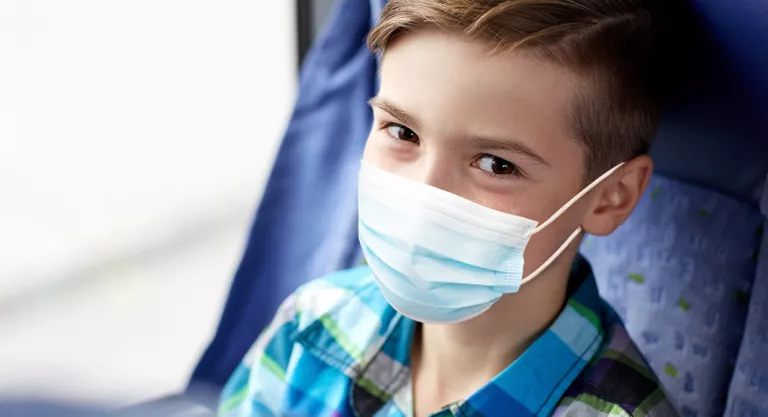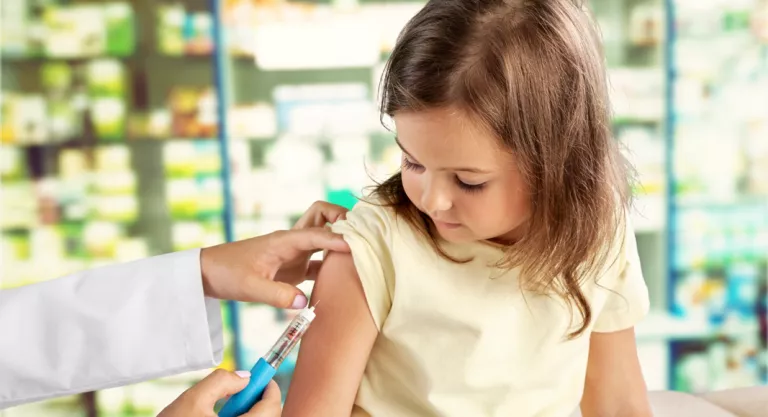Last fall, there was already talk of immune debt, a theory that posits the existence of a lack of stimulation of the immune system due to the lower circulation of viruses during the COVID-19 pandemic and due to the protection provided by measures to prevent infection by SARS-CoV-2 (social distance, masks, more hand hygiene, etc.), which would have the consequence that there would be a greater number of people susceptible to becoming infected with viruses against which they could not have been immunized, something more likely in the case of young children.
A study conducted by French researchers and published in ScienceDirect in May 2021 explained that a decrease in the incidence of viral and bacterial infections in children, such as bronchiolitis and whooping cough, had been observed, which could be explained by the measures non-pharmacological protection measures to avoid contracting the coronavirus, which not only limited the transmission of SARS-CoV-2, but also that of other pathogens. That fewer viruses circulate is good news, but the concern of the experts was that this would lead to a relaxation of the immune response due to a “decrease in collective immunity in the population”.
In the last flu season, many fewer cases than usual were detected, but we suffered a new wave of coronavirus infections that collapsed primary care health centers and the demand for SARS-CoV-2 detection tests skyrocketed, since everyone who had symptoms of COVID or had possible contact with an infected person wanted to make sure that they did not spread the infection to their loved ones during the Christmas celebrations.
But, was the flu virus displaced last fall-winter by SARS-CoV-2 and its variants, or were coinfections that went unnoticed? And what will happen this year with the flu, will we be more susceptible to contagion, or to have more severe symptoms due to a possible immune debt? What about babies and toddlers? Will they be more prone to contracting respiratory viruses, or will they have a worse immune response against them? We spoke with two experts who clarify it for us.
Immune debt, what is true in this theory?
But, what do the experts think about this hypothesis that has been on the table for months? “I do not share this theory of immune debt, the immune system of the Spanish has been stimulated for years with respiratory viruses, so there is a robust group immunity against them. It is not necessary to face it every year to maintain it. We will be infected again more or less depending on whether the variants that affect us this year are more or less virulent”, explains Dr. Carmen Cámara, Specialist Physician of the Immunology Service of the La Paz University Hospital, Madrid, and spokesperson to Webconsultas. of the Spanish Society of Immunology (SEI).
And he adds that “in these months we have not observed a higher incidence of flu, on the other hand, there have been cases of children with RSV (respiratory syncytial virus) outside the winter season, but in this case they are young children, so they had never had previous contact with said virus (there was no herd immunity for them)”.
“Vaccination campaigns should be as close as possible to the peaks of virus circulation to achieve maximum effectiveness”
Those born during the pandemic have been more isolated and have been subjected to more hygiene measures, but Dr. Pedro Gorrotxategui, vice president of the Spanish Association of Primary Care Pediatrics (AEPap), believes that this does not have to affect their immune response. “There is a hygienic theory that says that when a human being, a child in this case, is not exposed to infections, it is not that they have a deficiency to deal with other infections, but that they may be more prone to allergies, asthma… The theory of hygiene indicates that when we do not use the entire immune system to defend against infections, a part of it acts against us and there is a greater chance of developing asthma, eczema, rheumatic-type diseases…, but the fact that because we do not If you face an infection, do not defend yourself against another disease afterwards, I do not see much scientific basis for it.”

Regarding the doubt about whether the flu virus was displaced by SARS-CoV-2, or if there were co-infections with the flu virus that were not detected, the immunologist believes that “the first option is more possible, that there would be movement within the ecological niche of respiratory viruses”. “In addition, she – she adds – we must not forget an additional fundamental factor that has led to the use of the mask.” This year “increased social contact will probably lead to more cases of respiratory virus infections, including the flu,” she says.
How the flu season will affect children
Dr. Gorrotxategui tells us that small children (under two years of age) are usually more affected by bronchiolitis than the flu. “Last year practically no children had bronchiolitis, which is an infection that affects almost all children and that in other circumstances a large part of those now between 0 and two years old would have had. That group of children susceptible to bronchiolitis who have not had it does have the option of having it this year,” he says.
The expert adds that due to this, he does consider it possible that “an upsurge in bronchiolitis” may occur, which is “a condition that causes respiratory distress and which must be closely monitored because there is no effective treatment and some children have low oxygen in the blood and we have to be aware of how they evolve”.

In the case of children, he does not consider that “the flu is going to be a bigger problem than last year, because it depends a lot on the virus; some are more serious, and others less, and the fact that last year measures were established to control respiratory diseases does not mean that the flu will be worse this year, but this could have an impact, for example, on the case of bronchiolitis.
Should we advance flu vaccination or vaccinate children?
The vice president of the AEPap does not consider it necessary to advance the vaccination campaign, nor to vaccinate the non-vulnerable population. “There are risk groups that are the ones that need to be vaccinated against the flu, and then a general vaccination, recommended by the Spanish Association of Pediatrics, for all children over six months. But what all paediatricians and the entire health system must take into account is that children at risk must be vaccinated because, for example, we are seeing that in vaccines such as measles, coverage has dropped to 80%, when it has that it be more than 95%, and that we do not give the vaccines that are recommended by the national health system is serious. For this reason, the most important thing is to vaccinate against the flu in all children who have risk factors, although the vaccine can optionally be given to any child from six months of age”.
Dr. Carmen Cámara, for her part, believes: “we should not carry out vaccination campaigns, given that the effect of falling antibody titers is a clearly demonstrated fact in this pandemic. Vaccination campaigns should be as close as possible to the peaks of virus circulation to achieve maximum effectiveness. Starting vaccination campaigns for influenza in September is not justified for scientific reasons, but for the inevitable optimization of the personnel resources necessary to carry it out.

On the other hand, Cámara points out that “it would not extend the vaccination campaign to the entire population, but would redouble efforts to cover the vulnerable, without forgetting their relatives. So far we have not managed to achieve high vaccination coverage in these groups, staying in the best of cases at 50% “.
Tips to prevent respiratory infections in children this season
With or without a flu vaccine, it is advisable to take precautions to avoid this or any other respiratory infection, since vaccination does not protect against all flu viruses and may not be effective against the one circulating this season. The main recommendations of the experts consulted to prevent respiratory infections are:
.












